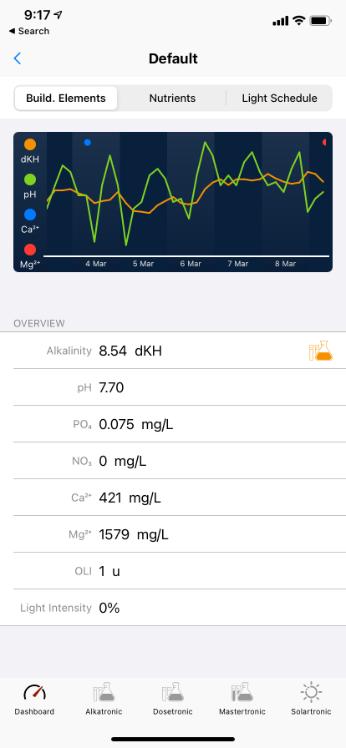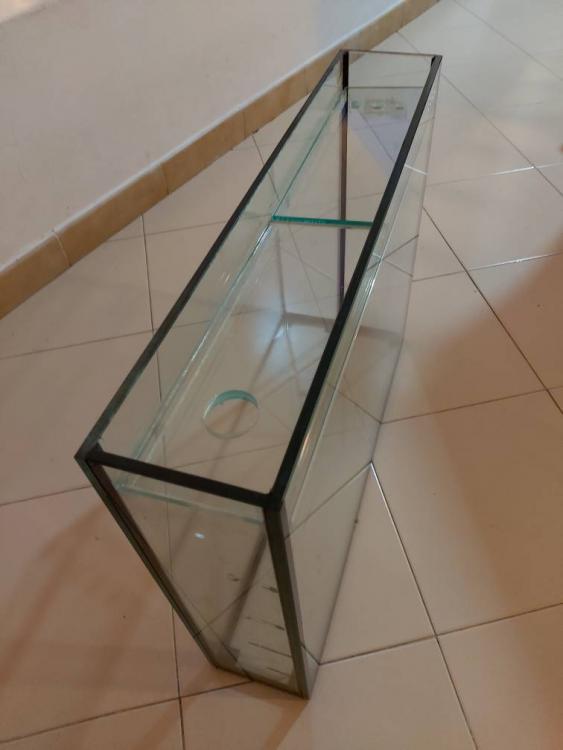Leaderboard
Popular Content
Showing content with the highest reputation on 04/18/2021 in all areas
-
Picked up a frag from fellow reefer recently. All the best on your future plans. Here it is in my tank. Hope I can maintain the lovely colors. Some other pics taken yesterday. Most with yellow filter. Bali shortcake (From Coral Fanatics SG) Divaricata (From Coral Fanatics SG) Space Invaders Pectinia (From Coral Fanatics SG) Horrida (From Reefing Reality) From reefer (originally from S5) Love the colors of this branching hammer (From Coral Fanatics SG) Holy Grail torch Fiji pink birdsnest2 points
-
Normally I place another frag plug/rock under the mushroom and hoping it will grow on it. Sometimes it eventually splits, I'm guessing this is probably due to the uneven surfaces.1 point
-
It has been one month+ since using the Mastertronic. And about 3yrs+ with the Alkatronic. There has been queries from fellow reefers along the way. I'll share some pics & comments here. Let's start with Mastertronic. Configuration & setup : Mine is set up to run Ca, Mg, PO4 & NO3. While the Mastertronic is able to test Alkalinity (using Salifert test kit), I configured mine to skip alkalinity and continue to use Alkatronic to measure this parameter. Alkatronic uses its own proprietary reagent to measure the change of pH using a pH probe. Each bottle can last ~2500 tests => at least 1.5yrs based on 4 tests per day. Moreover, the Alkatronic has an extra dosing pump to automatically dose alkalinity solution when it drops below the range. Accuracy : The Mastertronic use various test kits major brands, namely Red Sea (Phosphate, Magnesium), Fauna Marin (Nitrate), API (Calcium), Salifert (Alkalinity). I did some manual testing using the same test kits just to check accuracy. Mastertronic is spot on accurate for all the parameters. However, I did notice that Magnesium seems to read higher on Red Sea test kit compared to Salifert Magnesium. I'd trust the Red Sea Magnesium test kit a little more since it is all liquid reagents. On the other hand Salifert kit uses some crystals in the testing that is quite hygroscopic (absorbs moisture). I suspect this affects the accuracy since I'm actually adding less crystals when its laden with moisture. In any case, the small difference does not bother me. Overall the Mastertronic has been quite problem free. A couple of things to take note during installation. Some have complained of bent needles. I've not had any issues personally. I suppose its important to ensure the needle is fully inserted & fairly straight. A more likely cause of bent needles is improper positioning of the vials of reagent. The bottles must be fully inserted in the carousel. If the cap is not fully closed, the top may not slide in properly and result in the needle poking the plastic lid (instead of the silicone membrane). The needle may also bend further if its inserted at an angle, into an unclipped & moving vial. This is the inside view of the Mastertronic. At work, my boss often says "What gets measured gets done". In the same way, having water parameters get tested on its own, on a regular basis, ensures you are on top of water parameters. Encourages one to take action towards the target numbers. My numbers are not perfect but getting there. Test frequency : Nitrate : 1x a week Phosphate : 2x a week NO3 : 1x a week Magnesium : 1x a week OLI : 1x a week Alkalinity (via Alkatronic) : 4x a day So far, all is good with the Mastertronic. New firmware updates are pushed down to the unit automatically and cloud connectivity has been reliable. As with any new products, we expect to see more firmware releases in the initial months as corner case bugs get resolved. So far none has affected my operation. Next topic on Alkatronic. its been a workhorse since February 2018 (see original post here: https://www.sgreefclub.com/forum/topic/142862-my-slice-of-nature-part-3/?do=findComment&comment=1318876) Looking back, it probably saved my tank on several occasions. I will never run a tank without one. From the 4x daily KH measurements, you are able to understand what's going on. KH dropping very fast during the day (when lights are on). I'm using a calcium reactor. Tank consumes about 1.7dKH a day. With the alkatronic, it is possible to detect if the calcium reactor outlet tube is clogging as less effluent is coming out. This happened before when I was away on a business trip. I then triggered a fellow reefer to my place to unclog the calcium reactor. In the meantime, the Alkatronic was dosing alkalinity solution till help arrived. KH decreases gradually over the week. This could either be the dosing is slowing down gradually (measure it). Or a sign that the corals are consuming more Unable to hold KH levels. Bigger than usual swings from day to day. This is a tell tale sign of low salinity. I usually get this if salinity drops to about 1.023 - 1.024SG (instead of 1.026 / 35ppt) KH increases gradually over the week. There could be 2 reasons More is being dosed. Check calcium reactor effluent rate or dosing pump accuracy Corals not growing / consuming (more likely case). When this happens, its usually some water parameter is out of balance. Usually I'll detect that potassium is very low (eg. 350ppm instead of target 400ppm) or Magnesium (1260ppm instead of target 1400ppm). I've also noticed that dosing trace elements increase consumption slightly. KH increases beyond 13dKH. This is usually a hardware fault. The maximum that Alkatronic can read is 13dKH and give a Code3 error. The unit determines the kH level based on the amount of reagent added. Higher alkalinity if more reagent is added. However if the reagent nozzle is clogged, no reagent is dispensed into the beaker, but the unit is still counting the volume. Check the pink nozzle. Unclog it. In my case, I snipped a bigger hole and recalibrated the pump. The issue didn't come back again. Reagent tubes leaking. The only tube that has a higher chance of leaking is the 1.6mm one for the reagent. It stretches over a acrylic tube. Especially if you tug & pull it, it can develop micro holes or cracks over time. As a preventive step, I snip off the ends ever 6 months or so. This is what it looks like after 3 years of use. The internal peristaltic pump tubes and the 1.6mm reagent hoses have been changed once around the 2.5yr mark. You can see from the color of the hoses. The pH probe is still the original set. Its calibrated once every 6-9 months. I've changed the hoses once so far. They weren't leaking or anything but just a preventive move.1 point
-
For $20, I have a sturdy 28L, 6mm glass, ATO reservoir (dimensions in cm 58 x 12 x48high). It has split glass cover/lids which have been drilled for cables and tubes. Could also used as a small refugium or if adventurous a mini display tank. Just $20. WhatsApp me on 88080763 or PM me here. Happy reefing. Sent from Singapore Reef Club mobile app1 point
-
1 point

.thumb.jpg.57c2e34da3fe90fcdb8e11c6a93f46a9.jpg)

.jpg.1ba4fb9c12eed1545a2394deff202811.jpg)
.jpg.766202aae9f523be6c744bb10ed1cbd0.jpg)

.jpg.b93a5b7e037c745119ed6f730bcd388f.jpg)
.jpg.3d8010be7277f899eeaa6f2aad1ebf5b.jpg)
